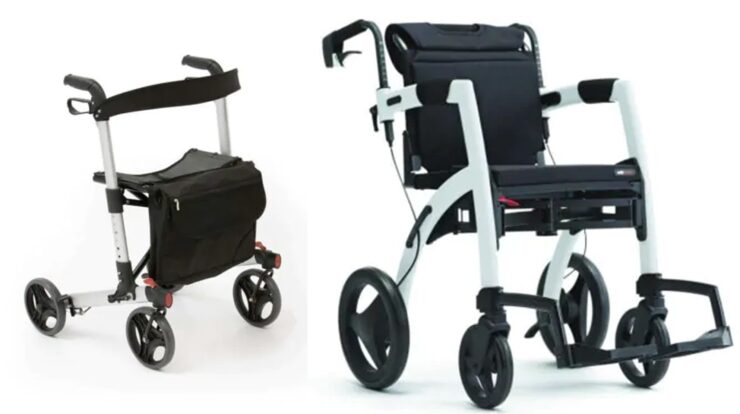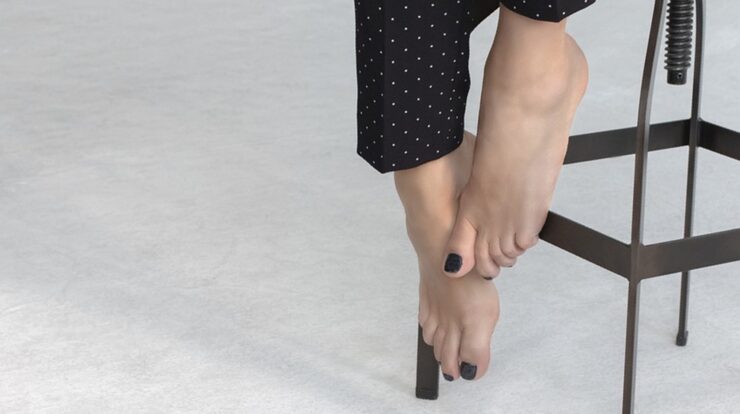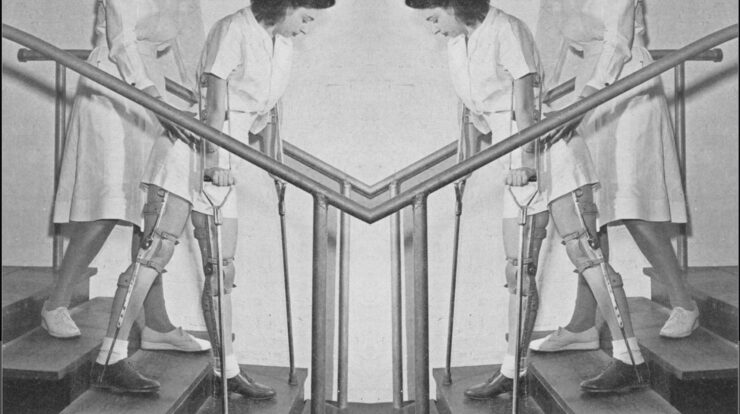
At some point in our lives, most of us experience the unfortunate consequence of spraining an ankle and have to watch as the ankle slowly balloon in size.
The sudden swelling of the foot identifies the sprain after twisting an ankle while doing physical activity. You do not have to be an athlete to experience a sprained ankle.
In this boot walker article, I share with you the most common question associated with a sprained ankle, how long does a sprained ankle stay swollen?
A sprained Ankle Stay Swollen anywhere from a few days to as long as 12 weeks. The length of time is dependent on the grade or severity of the sprain.
The answer depends on the type of ankle sprain you have sustained.
If the ligaments have been stretched but not torn, the ankle injury will heal relatively quickly, and you will most likely only need to stay off your foot for several days.
A simple ankle sprain will be painful but not seriously painful; you can send someone to the pharmacy to purchase some rub for it.
Keep your sprained ankle elevated by putting it up on the couch for two or three hours per day and catch up on Netflix.
The swelling will disappear after two or three days.
More severe sprains involving torn ligament could last for as long as 12 weeks.
So what is a sprained ankle, and how do most people pick up a sprain?
What Is An Ankle Sprain?
An ankle sprain is a common musculoskeletal injury usually involving stretched ligaments. Ligaments connect one bone to another.
You may be walking on uneven terrain and turn your ankle painfully sideways, and this can cause a simple sprain to occur.
When swelling starts, you will need to remove your shoe and soak your foot in a cold foot bath or bucket.
If you immediately ice it, this will help, but it depends on where the injury happens, and if you are out bushwalking, this may not be possible.
Different Types Of Ankle Sprains.
A sprain is an injury to a ligament caused by sudden overstretching. The ligament gradually heals, but it may take several months, and experts agree that it is essential to restrict activity until healing occurs.
GRADE 1 ANKLE SPRAIN, a simple sprain should fully recover within two weeks. This type of sprain does not require medical intervention, and the pain is minor.
Children playing contact sports often sustain this type of injury, and as the sprain is easily aggravated, they need to rest the joint for the first few days and not play any sport for two weeks.
GRADE 2 ANKLE SPRAIN is a more severe sprain, and the ligaments on the ankle may have a partial tear. A partial tear ligament will take four to six weeks before complete healing happens.
A doctor should be consulted with this type of sprain, as there is a need for rest, and if you have a grade 2 sprain, you will need to work from home for a couple of weeks to facilitate healing.
Towards the end of the healing period, you may require physiotherapy for complete rehabilitation.
GRADE 3 ANKLE SPRAIN is more severe than a grade two. Grade three sprain with a torn ligament will probably require a cast to recover. Alternatively, the medical professional may use a mechanical foot brace on the lower leg for fast recovery.
The torn ligament makes the ankle unstable, requiring quite a long healing process. Often a light air cast is used, and rest and elevation are necessary.
When the cast comes of some level of rehabilitation will be required, possibly swimming and physiotherapy to gradually build the joint back to strength.
You may not be able to weight bear on the ankle for the first couple of weeks after injury, and it will be painful, requiring analgesia.
Once recovered, you may need to continue wearing an elastic ankle support brace.
How Can I Tell If I Have An Ankle Sprain?
A sprained ankle is usually reasonably easy to diagnose, and the symptoms will include:
* Pain when you try to stand on it.
* Sore to touch.
* Swollen, it swells up quickly, and this is where the ice is vital as a first-aid treatment.
* Bruising
* Movement may be restricted.
* The ankle joint may be unstable
* You may have heard a snapping noise when the injury occurred.
If you are out walking when this happens, send or call for help, do not try to walk on it as this can cause more damage.
A doctor will examine your ankle and foot and check for tenderness, and check your range of movement in the affected area.
See your local doctor if you are concerned, as if it is a simple grade 1 sprain, you will not need to attend the ER.
Over the next few days, the bruising will gradually appear and become black, and this is when you are to rest – during the first few days to speed up the healing process.
Your doctor will mainly be checking to ensure that you have no broken bones and sent home to rest the sprain. So, elevate your feet regularly and not walk for the first few days.
How Long Does A Sprained Ankle Stay Swollen?
A simple sprain will stay swollen for about 48 hours, and then it will begin to subside.
Damaged ligaments will stay swollen for about two weeks, and during this time, rest and leg elevation is essential.
Torn or partly torn ligament should be immobilized, and you should not walk on the ankle. Immobilization is crucial in the healing process, and sometimes the medical professional will apply bandages for additional joint support.
There are three definite phases to healing. The first phase is the inflammatory phase, followed by the proliferative phase.
Finally, the remodeling phase is when the ankle gets better.
So the swelling is often not entirely gone for several weeks; once the swelling goes down, it is advisable to keep the ankle bandaged for a while to give it some support when you are walking around again.
When you first return to work, you will notice that it is swelling again by the end of the day.
Elevate it and rest it until the following day, when you may need to continue to bandage it for a week or two.
Once the swelling has gone when you get out of bed each day, it is normal to find it comes back in the evening after you have been walking around. Ask your doctor about strengthening exercises.
If it continues to swell, you are probably standing on it too much during the day at work.
Getting Rid Of Swelling After An Ankle Sprain
If you are left with residual edema or swelling in your ankles, after getting back on your feet following a sprained ankle, you can get rid of it; it just takes time.
Once you are at home, there are a couple of different things you can try.
1.R-I-C-E METHOD
Take off your shoes and lie on your back. Apply a cold compress to the area to constrict the vessels and stimulate blood flow back to the heart.
Leave the cold compress on for 10-20 minutes. Elevate your legs on two pillows to increase the blood flow back to your body,
Lastly, put a compression stocking on the affected leg while you are at home to reduce swelling. Do this every day when you return from work.
2.MASSAGE
As soon as you notice swelling settling in, gently massage the area to eliminate fluid and stimulate blood flow.
Drink lots of water; when the body lacks water, it tries to lock it back into the cells, causing swelling. Drink 7-10 glasses of water a day.
3.EXCERCISE
You won’t be able to do this for a while, but you can get back to exercise as soon as you can.
Exercise will activate the lymphatic system and get the swelling down in your feet and ankles.
4.REDUCE SALT INTAKE
Salt retains fluid, so if you consume too much salt, your body will retain excess water and fluids.
5.DIURETICS
If you are an older person retaining a lot of fluid, your doctor may recommend a diuretic medication.
If you already have a cardiac condition and you are immobile with a sprained ankle, you will sometimes be given a diuretic to get rid of the fluid and to be able to walk normally again.
How To Regain Stability After Your Ankle Sprain
How long does a sprained ankle stay swollen? You have to be patient, and often you will have to rest for a week or two.
If you put weight on it too soon, it will take even longer to heal.
If you have physical therapy, you will get some strengthening exercise every day to aid your recovery.
Once you are weight-bearing comfortably, you will begin the strengthening exercises and probably start with something easy and build up to a more difficult range.
As your ankle becomes stronger, stand on an Air pad with one foot, and try to keep your balance for 10 seconds.
Then change feet and do it with the other foot, increase the time each day.
Exercises To Stretch The Ankle Following A Sprain
* Sit on the floor and raise your ankle and foot as far as you can
* Bring your ankle up and out, hold the position for 10 seconds.
* While sitting, straighten your leg, point the toe down, and hold the position for ten seconds.
Some people have a history of ankle instability, and this causes recurring sprains. They often need to continue with the ankle exercises and wear elastic support around the ankle to stabilize it during exercise.
If you have expert rehabilitation, you should be able to return to sport following an ankle sprain, even when it has been quite severe.
Returning To Exercise After Spraining Your Ankle
Cyclist: If you are a cyclist returning to your bike and have suffered a sprain to your ankle, you will need to limit the time spent riding when you commence riding again.
Cycling will probably irritate your ankle for a while, so keep the rides strictly to 15 minutes at a time for the first week and see how your ankle is afterwards.
Some people find that the swelling returns. Sports like swimming are fine, as you will not be weight-bearing.
If you are an athlete, you won’t be able to run immediately, but go along to the Sports Medicine Doctor to get some recommendations, as you could easily injure your ankle again if you run on it too soon.
A runner will need to purchase the right running shoes that offer cushion and ankle support.
And it is an excellent time to get some new light shoes, as one of the reasons we damage our ankles is often the wrong sort of shoe.
Avoid a shoe that is worn out and not offering support to the arch and heel of the foot.
When you do get back to running, try to run on grass or softer surfaces for a while to prevent jarring to the foot.
Footballer: If you are a footballer, you may be sent back to play for the team too soon, as they will want you on the field.
Ensure that you wear a support brace of some kind as the injury is likely to recur on the sporting field.
It is difficult for the physician to judge the player’s readiness to resume play, and a number of functional tests will be carried out to assess readiness.
If you get recurring sporting injuries in the same joint, you are at risk of arthritis later in life.
Tennis player: If you are a tennis player, a sprained ankle is the most common injury. You would be used to asking how long does a sprained ankle stay swollen?
If you have a sprain and are out for two weeks at finals time, this can be extremely frustrating.
Tennis players change direction in play very quickly and are also forced to lunge, which is a common cause of sprains.
If you start to play again too soon after an injury, it will reoccur.
Conclusion
The reality is, once you have a sprained ankle, you are going to have to rest it, whatever your occupation or sport, as to heal, you have no other choice.
Get the best advice you can for your injury, and sometimes you may require imaging to see if there is any internal damage to the joint.
Once the swelling and bruising fade, you will feel a whole lot better, and it won’t be long before you are back to playing sport again.





